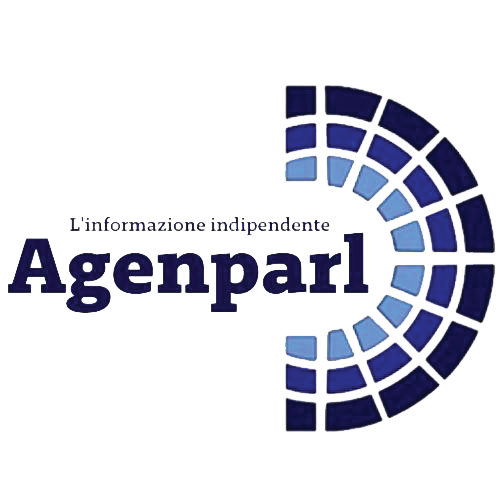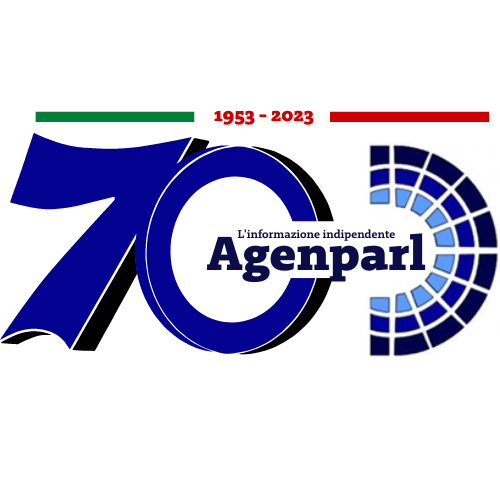 (AGENPARL) - Roma, 26 Luglio 2024
(AGENPARL) - Roma, 26 Luglio 2024(AGENPARL) – ven 26 luglio 2024 A weekly compendium of media reports on science and technology achievements
at Lawrence Livermore National Laboratory. Though the Laboratory reviews
items for overall accuracy, the reporting organizations are responsible for
the content in the links below.
….. LLNL Report, July 26, 2024
Cover cropping has a relatively high potential contribution to national
soil-based CO2-removal efforts, due mainly to the large extent of land area
that can be cover-cropped without interfering with cash-crop production.
(Photo: LLNL)
… The big potential in carbon removal
https://www.eco-business.com/news/negative-emissions-scientists-debate-role-of-co2-removal-in-tackling-climate-change/
The third international conference on negative CO2 emissions, held recently
in Oxford, focused on the latest science, policy gaps and methods of carbon
dioxide removal. Jennifer Pett-Ridge from Lawrence Livermore National
Laboratory outlined the findings of a recent report on the options for
carbon dioxide removal (CDR) in the U.S.
The report, put together by almost 70 scientists and 13 institutions, looks
at regional possibilities for CDR and storage. Pett-Ridge said the U.S. can
reduce 1 billion tons of CO2 from the atmosphere each year by 2050 using CDR
methods, at an annual cost of $129 billion.
She said it is sensible to initially focus on forestry and soils. Biomass
conversion also has big potential, she said. The researchers also analyzed
issues in inequity and justice as part of their analysis.
Read More
https://www.eco-business.com/news/negative-emissions-scientists-debate-role-of-co2-removal-in-tackling-climate-change/
The iconic Burney Falls is a sampling site for the project. (Photo: CalTrout)
… In uncharted waters
CalTrout Launches New Source Water Science Study
In an effort to assess the impact of climate change on water sources,
CalTrout has teamed with Lawrence Livermore and other collaborators to study
spring water and learn more about how they have been affected by recent
drought and other climate change impacts.
In 2023, CalTrout and partners embarked on a three-year study to provide a
scientifically based toolset to better understand, manage, and advance the
protection of the cold, clean spring waters in the Upper Sacramento Basin.
Building on past efforts to assess baseline conditions of springs in the
Mount Shasta region, this study will define and quantify source areas and
flows, assess ecosystem sensitivity to climate change and determine how these
systems support the diverse life history of wild cold-water fish.
Read More
A top-down view of one of the containers holding rocks and dust from asteroid
Bennu, with hardware scale marked in centimeters. (Image: NASA Johnson Space
Center/Erika Blumenfeld and Joseph Aebersold)
… Asteroid Bennu unveiled
https://phys.org/news/2024-07-bennu-asteroid-samples-unveiled.html
Now at Lawrence Livermore National Laboratory lies a piece of ancient
history; extremely ancient history.
The material, at just 120 milligrams, will provide information about the
early solar system, planetary formation, and potentially, even life on Earth.
LLNL scientists have recently received and will analyze samples from the
asteroid Bennu that will help explain how it formed and from where it came.
Bennu is a small, carbon-rich near-Earth asteroid that passes close to Earth
about every six years. It was the target of NASA’s OSIRIS-REx mission to
collect an asteroid sample and bring it to Earth. The spacecraft returned to
Earth last fall, landing in Utah, with approximately 120 grams of Bennu
tucked away on board.
Read More https://phys.org/news/2024-07-bennu-asteroid-samples-unveiled.html
In inertial confinement fusion experiments, lasers at Lawrence Livermore
National Laboratory’s National Ignition Facility focus on a tiny fuel
capsule suspended inside a cylindrical X-ray oven called a hohlraum. (Photo:
Jason Laurea/LLNL)
… The drive to improved fusion energy
A team of researchers at Lawrence Livermore National Laboratory (LLNL) has
made advancements in understanding and resolving the long-standing
“drive-deficit” problem in indirect-drive inertial confinement fusion
(ICF) experiments. This discovery could pave the way for more accurate
predictions and improved performance in fusion energy experiments at the
National Ignition Facility (NIF).
The study, led by physicist Hui Chen, Tod Woods and a team of experts at
LLNL, focused on the discrepancies between predicted and measured X-ray
fluxes in laser-heated hohlraums at NIF.
“Significant effort has been invested over the years to pinpoint the
physical cause of the radiation drive-deficit problem,” Chen said. “We
are excited about this discovery as it helps resolve a decade-long puzzle in
ICF research. Our findings point the way to an improvement in the predictive
capabilities of simulations, which is crucial for the success of future
fusion experiments.”
In NIF experiments, scientists use a device called a hohlraum —
approximately the size of a pencil eraser — to convert laser energy into
X-rays, which then compress a fuel capsule to achieve fusion.
Despite the historical consensus, trivalent actinides and lanthanides exhibit
distinct chemistries.. By using polyoxometalate chelators, LLNL scientists
provide crystallographic and spectroscopic evidence that americium and curium
yield a variety of compounds that their lanthanide counterparts are unable to
form. (Image: Eric Smith/LLNL)
… Unravelling the chemistry of heavy elements
https://phys.org/news/2024-07-technique-synthesis-heavy-element-compounds.html
Molecular compounds with heavy elements, like americium, curium and others
can now be synthesized in a streamlined and efficient way thanks to a new
technique developed by Lawrence Livermore researchers.
The new pathway can help scientists perform serial chemistry with radioactive
elements and could be used to speed up R&D for nuclear waste management and
radiopharmaceuticals. LLNL scientists describe how the new technique will
lead to innovative ways of separating elements and studying properties of
difficult-to-study radioisotopes.
The research highlights the creation of a large series of new compounds (20
new crystal structures), including the first trivalent americium
polyoxometalate compound and two new compounds with curium. Curium has
remained an elusive element, with only seven crystal structures of curium
molecular compounds reported from its discovery in 1944 to 2020. LLNL
scientists discovered five new ones in the past two years.
“We have a new chemical platform to make and study compounds containing
pretty much any actinide,” said LLNL postdoctoral researcher Ian Colliard
“We use a thousand times less materials (micrograms vs. milligrams), so we
can go faster, make many more new compounds and it costs less to the
Department of Energy.”
Read More
https://phys.org/news/2024-07-technique-synthesis-heavy-element-compounds.html
LLNL lead mechanical designer Darrel Carter developed the overall design and
assembly for the Deep Purple payload. He is shown verifying the final
mechanical torque on the assembly. In the background are Jordan Smilo, the
Deep Purple project manager, and electrical engineer Princess
Corral. (Photo: Garry McLeod/LLNL)**
… A telescope as small as a shoebox
https://www.independentnews.com/news/livermore_news/llnl-delivers-a-low-cost-compact-space-telescope-in-under-one-year/article_c8e4f6f4-44d6-11ef-bc8c-c7e4573eefd3.html
Though the Deep Purple telescope is no bigger than a shoebox, its optical
capabilities could help scientists find out which stars might support
extraterrestrial life in space, or peer through smoke and fog on Earth, among
other potential uses.
Planned for launch aboard SpaceX’s Transporter-11 mission this month, the
project demonstrates how Lawrence Livermore can build custom, low-cost
telescopes under tight deadlines.
The telescope was developed in under a year for less than $1 million with
specific capabilities: it had to be compact, lightweight and it needed to
detect both short-wave infrared (SWIR) and ultraviolet (UV) light. This range
of detection is unusual, since there are only a handful of telescopes that
have UV functionality, the Hubble Telescope being one of them. So, the
project was named Deep Purple both in reference to the famous rock band and
how purple is the closest color on the visible light spectrum to ultraviolet.
Jordan Smilo, principal investigator and space hardware lead mechanical
engineer, said: “Deep Purple really showcases the best we can do, in terms
of science and engineering coupled with commercial technologies that are mass
produced at lower costs.” He referred to the telescope as part of
“responsive space,” which is a field that focuses on making tools to
explore space based on specific needs or concerns.
Read More
https://www.independentnews.com/news/livermore_news/llnl-delivers-a-low-cost-compact-space-telescope-in-under-one-year/article_c8e4f6f4-44d6-11ef-bc8c-c7e4573eefd3.html
——————————————————————————
Founded in 1952, Lawrence Livermore National Laboratory https://www.llnl.gov
provides solutions to our nation’s most important national security
challenges through innovative science, engineering and technology. Lawrence
Livermore National Laboratory is managed by Lawrence Livermore National
Security, LLC for the U.S. Department of Energy’s National Nuclear Security
Administration.
Read previous Lab Report articles online https://www.llnl.gov/news/lab-report
— Unsubscribe from this newsletter :
